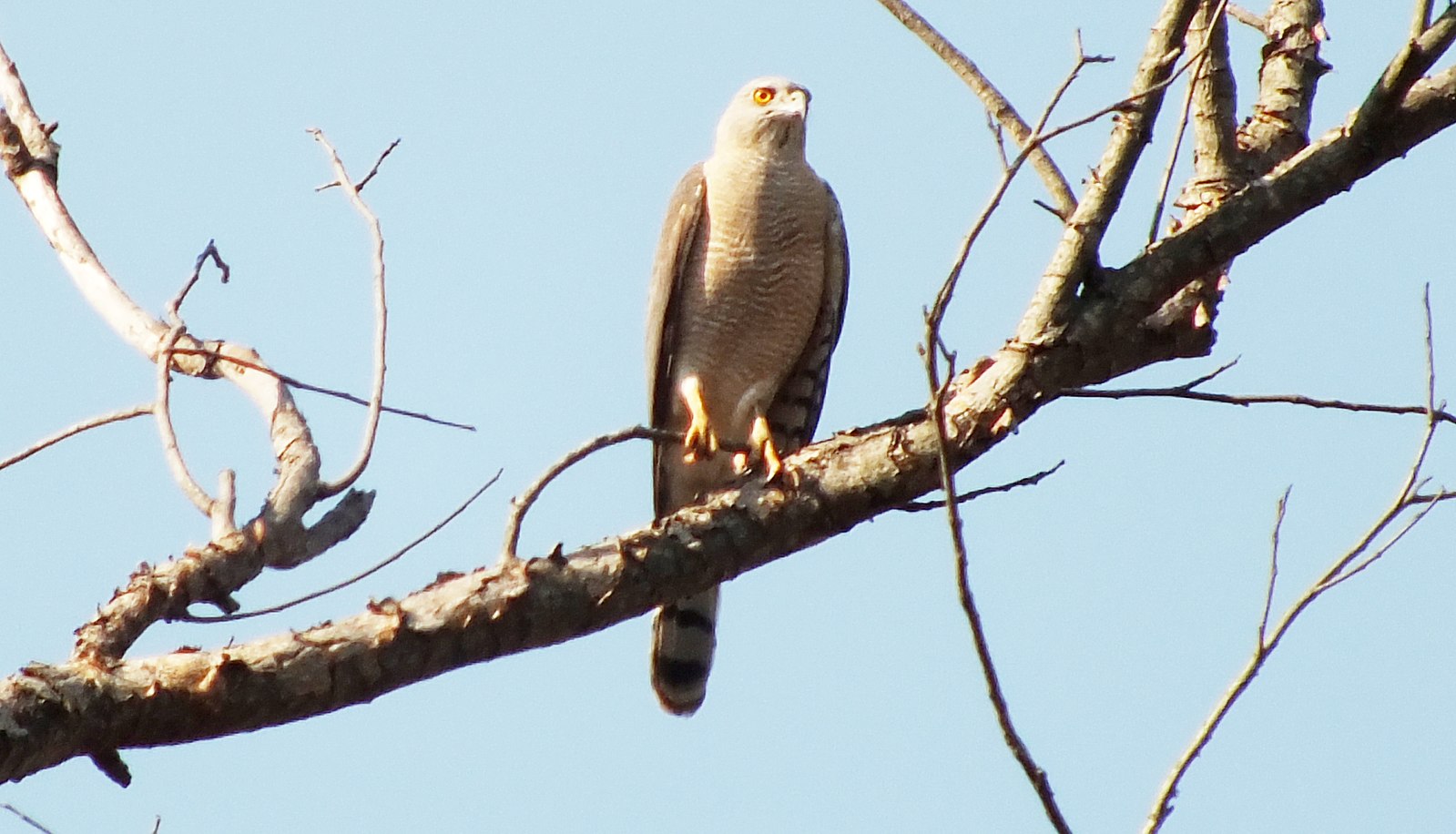The shikra (Accipiter badius) and crows are two captivating bird species that have captured the attention of bird enthusiasts and researchers alike. These birds, with their unique characteristics and behaviors, offer a glimpse into the diverse and intricate world of avian life.
Physical Characteristics of Shikras
Shikras are small raptors with a distinctive appearance. They have short, rounded wings and a narrow, elongated tail. Adults are typically whitish on the underside with fine rufous bars, while their upperparts are a striking grey color. The males have a red iris, while the females have a less vibrant yellowish-orange iris and brownish upperparts with heavier barring on the underparts.
Behavioral Traits of Shikras
 Image source: SHIKRA by Shiv’s fotografia
Image source: SHIKRA by Shiv’s fotografia
Shikras are found in a variety of habitats, including forests, farmlands, and urban areas. They are usually observed singly or in pairs, and their flight is characterized by a series of flaps and glides. During the breeding season, pairs engage in aerial displays, soaring on thermals and stooping at each other. These birds are known to feed on a diverse range of prey, including rodents, small birds, reptiles, and insects.
Breeding Habits of Shikras
The breeding season for shikras in India typically occurs during the summer months, from March to June. They build a platform-like nest, similar to that of crows, and line it with grass. Both male and female shikras participate in the nest-building process, carrying twigs in their feet. The usual clutch size is 3 to 4 eggs, which are pale bluish-grey with black stippling on the broad end. The incubation period lasts between 18 to 21 days.
Crows: Intelligent and Adaptable Avians
Crows belong to the Corvidae family, which includes species such as the common raven, carrion crow, and rook. These birds are known for their intelligence and adaptability, thriving in a wide range of habitats around the world.
Physical Characteristics of Crows
Crows are medium-sized birds with strong, stout bodies and heavy bills. They have a distinctive glossy black plumage, and their size and shape can vary depending on the species. For instance, the common raven is one of the largest crow species, with a wingspan of up to 4 feet, while the carrion crow has a slightly smaller wingspan of around 3 feet.
Behavioral Traits of Crows
Crows are highly social birds that live in groups called “murders.” They are omnivorous, with a diet that includes insects, fruits, seeds, and small animals. Crows are renowned for their intelligence and problem-solving abilities, and they have been observed using tools and engaging in complex social behaviors.
Breeding Habits of Crows
Crows build their nests in trees or on cliff ledges, and they typically lay 3 to 9 eggs per clutch. Both parents participate in incubating the eggs and caring for the young, which are born helpless and naked.
Shikras and Crows: A Predator-Prey Relationship
One fascinating aspect of the relationship between shikras and crows is their dynamic as predator and prey. Shikras are known to hunt and consume crows, and this interaction can be observed in urban areas where both species coexist. This predator-prey relationship highlights the complex and often brutal realities of the natural world, even in human-dominated environments.
Population Status and Conservation
According to the IUCN Red List, the total population size of the shikra is estimated to be between 500,000 and 999,999 mature individuals. The species is currently classified as Least Concern (LC) on the IUCN Red List, and its numbers are considered stable.
In contrast, the American crow (Corvus brachyrhynchos) has experienced significant population declines in recent years due to the West Nile virus. The Cornell Lab of Ornithology reports that the population of American crows has declined by approximately 45% since the virus was first detected in the United States in 1999.
Conclusion
Shikras and crows are two remarkable bird species that offer a glimpse into the diverse and captivating world of avian life. From their physical characteristics to their behavioral traits and breeding habits, these birds continue to fascinate and inspire researchers and bird enthusiasts alike. By understanding the unique perspectives and real-life incidents surrounding these species, we can gain a deeper appreciation for the intricate relationships and dynamics that exist within the natural world.


